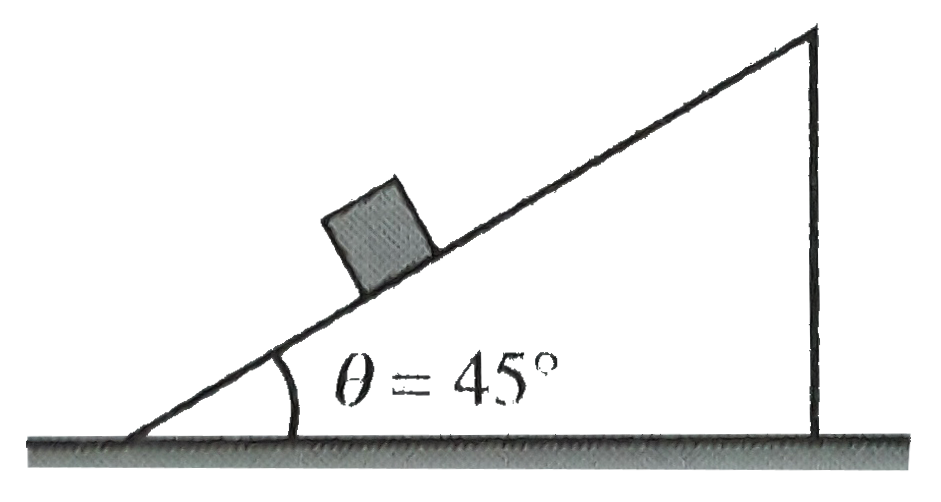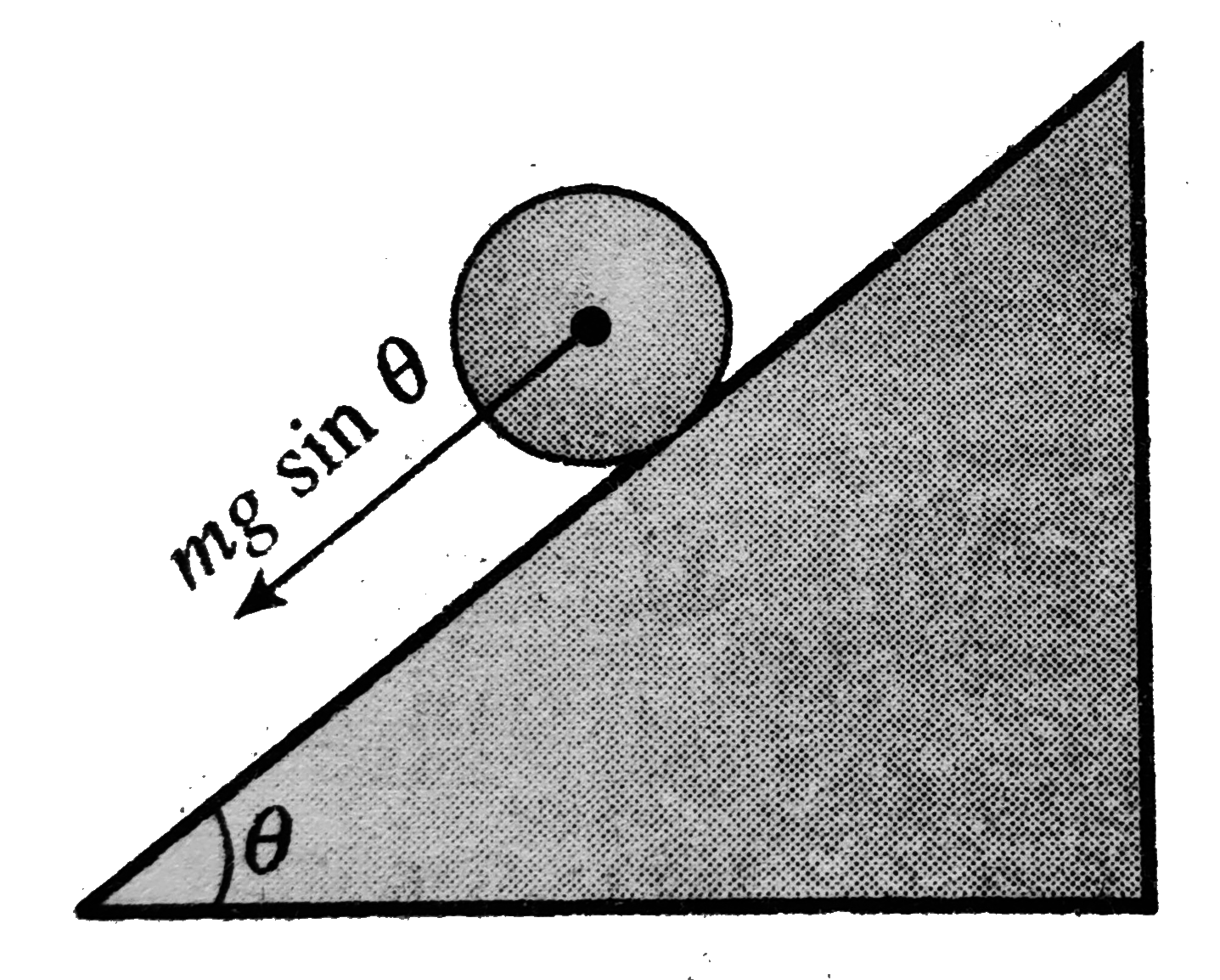A body of mass 2 kg is lyign on rough inclined plane of inclination 300. Find the mgnitude of the force parallel to the incline needed to make tkheblock move a. up the incline b. down the incline. Coefficient of static friction =0.2
To solve the problem, we need to find the force required to move a block of mass 2 kg up and down a rough inclined plane with an inclination of 30 degrees and a coefficient of static friction of 0.2.
Given Data:
- Mass of the block (m) = 2 kg
- Angle of inclination (θ) = 30 degrees
- Coefficient of static friction (μ) = 0.2
- Acceleration due to gravity (g) = 9.8 m/s²
Step 1: Calculate the gravitational force acting on the block.
The gravitational force (weight) acting on the block is given by:
Fg=m⋅g=2kg⋅9.8m/s2=19.6N
Step 2: Determine the components of the gravitational force.
The gravitational force can be resolved into two components:
1. Parallel to the incline (down the slope):
F∥=Fg⋅sin(θ)=19.6N⋅sin(30∘)=19.6N⋅0.5=9.8N
2. Perpendicular to the incline (normal force):
F_{\perpendicular} = F_g \cdot \cos(\theta) = 19.6 \, \text{N} \cdot \cos(30^\circ) = 19.6 \, \text{N} \cdot \frac{\sqrt{3}}{2} \approx 16.97 \, \text{N}
Step 3: Calculate the maximum static friction force.
The maximum static friction force (F_s) is given by:
F_s = \mu \cdot F_{\perpendicular} = 0.2 \cdot 16.97 \, \text{N} \approx 3.394 \, \text{N}
Part A: Force required to move the block up the incline.
To move the block up the incline, we need to overcome both the gravitational component acting down the incline and the static friction. Therefore, the total force (F_up) required is:
Fup=F∥+Fs=9.8N+3.394N≈13.194N
Part B: Force required to move the block down the incline.
To move the block down the incline, we need to overcome the static friction force. Therefore, the total force (F_down) required is:
Fdown=F∥−Fs=9.8N−3.394N≈6.406N
Final Answers:
- Force required to move the block up the incline: 13.2 N
- Force required to move the block down the incline: 6.4 N
- Mass of the block (m) = 2 kg
- Angle of inclination (θ) = 30 degrees
- Coefficient of static friction (μ) = 0.2
- Acceleration due to gravity (g) = 9.8 m/s²
The gravitational force (weight) acting on the block is given by:
Fg=m⋅g=2kg⋅9.8m/s2=19.6N
The gravitational force can be resolved into two components:
1. Parallel to the incline (down the slope):
F∥=Fg⋅sin(θ)=19.6N⋅sin(30∘)=19.6N⋅0.5=9.8N
F_{\perpendicular} = F_g \cdot \cos(\theta) = 19.6 \, \text{N} \cdot \cos(30^\circ) = 19.6 \, \text{N} \cdot \frac{\sqrt{3}}{2} \approx 16.97 \, \text{N}
The maximum static friction force (F_s) is given by:
F_s = \mu \cdot F_{\perpendicular} = 0.2 \cdot 16.97 \, \text{N} \approx 3.394 \, \text{N}
To move the block up the incline, we need to overcome both the gravitational component acting down the incline and the static friction. Therefore, the total force (F_up) required is:
Fup=F∥+Fs=9.8N+3.394N≈13.194N
To move the block down the incline, we need to overcome the static friction force. Therefore, the total force (F_down) required is:
Fdown=F∥−Fs=9.8N−3.394N≈6.406N
- Force required to move the block up the incline: 13.2 N
- Force required to move the block down the incline: 6.4 N
Topper's Solved these Questions
Similar Questions
A block of mass m=3kg slides on a rough inclined plane of cofficient of friction 0.2 Find the resultant force offered by the plane on the block
 View Solution
View SolutionA 2-kg body is sliding up an inclined plane of inclination 30∘. Find the work done by the force of gravity m moving the body through I m.
View Solution
Knowledge Check
- Question 1 - Select One
A body of mass 2 kg is lying on a rough inclined plane of inclination 30º. Find the magnitude of force parallel to incline needed to make the block move (a)up the incline (b)down the incline. Coefficient of static friction = 0.2
A13N,5NB13N,13NC13N,0ND5N,13N - Question 2 - Select One
A body of mass 10kg is lying on a rough inclined plane of inclination 37∘ and μ=1/2 , the minimum force required to pull the body up the plane is
A80NB100NC120ND60N - Question 3 - Select One
A solid cylinder of mass 3kg is placed on a rough inclined plane of inclination 30∘. If g=10ms2, then the minimum frictional force required for it to roll without slipping down the plane is
 A2NB5NC15ND18N
A2NB5NC15ND18N
A block of mass 10 kg is kept on a fixed rough (μ=0.8) inclined plane of angle of inclination 30∘. The frictional force acting on the block is
 View Solution
View SolutionA block of mass m moves with constant speed down the inclined plane of inclination θ. Find the coefficient of kinetic friction.
 View Solution
View SolutionA block of mass 5 kg is at rest on a rough inclined surface. If angle of inclination of plane is 60∘, then force applied by it on block is
View SolutionA rough inclined plane has its angle of inclination equal to 45∘ and μ=0.5. The magnitude of the least force in kg wt parallel to the plane required to move a body of 4 kg up the plane is
View SolutionA body of mass m is kept on a rough fixed inclined plane of angle of inclination θ=30∘. It remains stationary. Then magnitude of force acting on the body by the inclined plane is equal to :
View Solution

